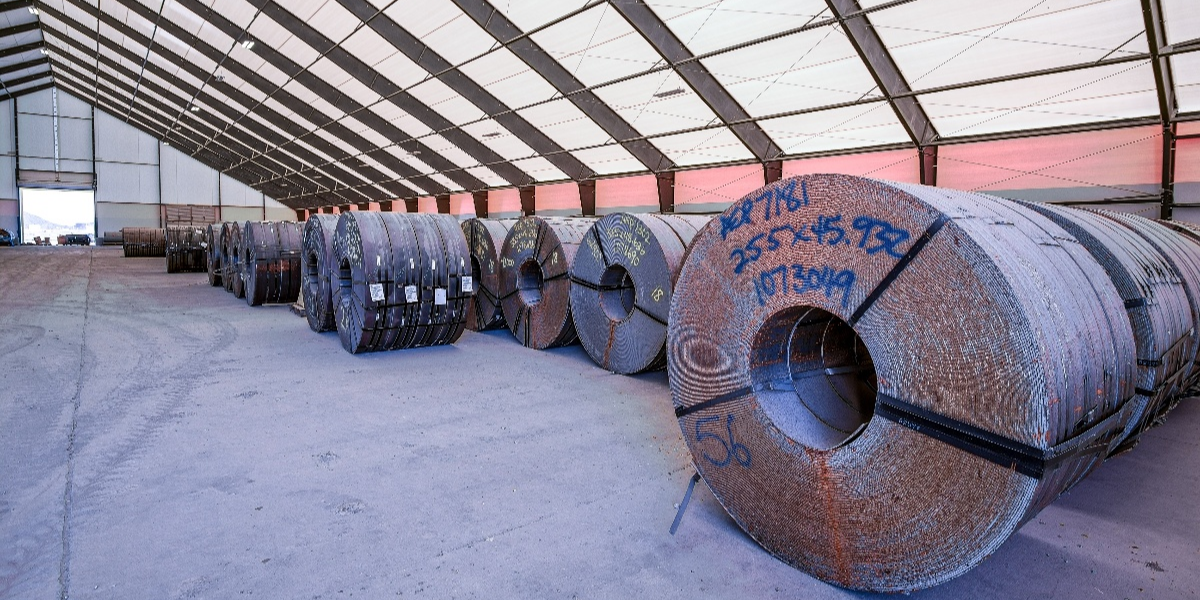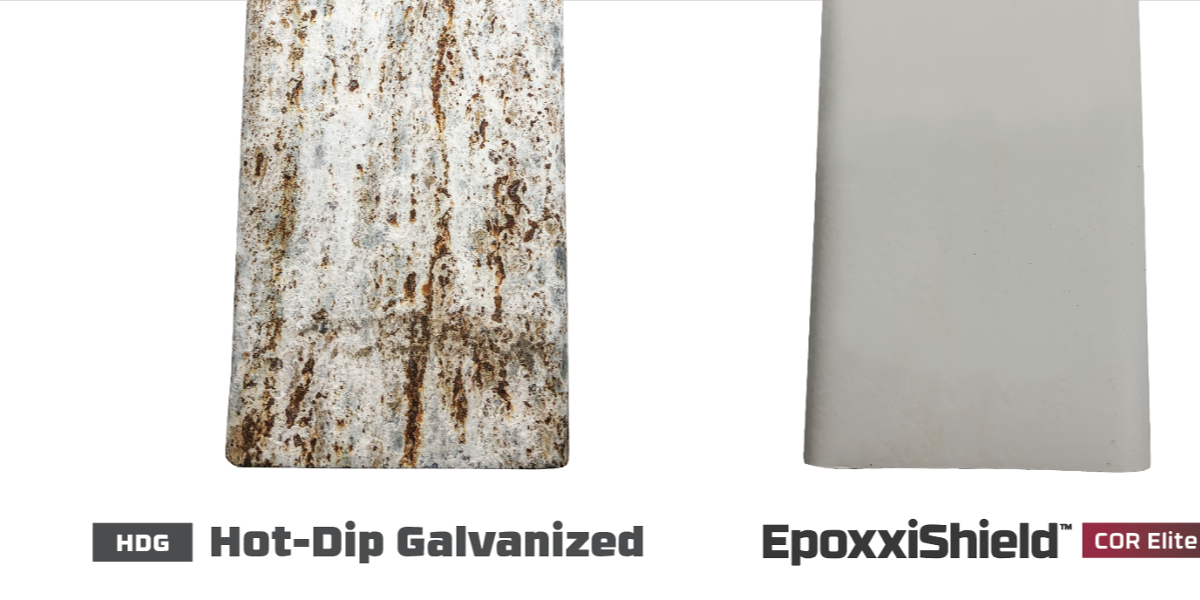Why Choose Fabric Structures for Inland Ports?

Inland waterways are the most cost-effective, environmentally friendly, and efficient way to move goods across the country. Inland marine port authorities are faced with the challenging task of providing a safe, dry and economical way to store and load everything transported via barge.
Fabric structures have the design flexibility and advantages to meet the demanding needs for transloading and transportation hubs at waterway terminals.
Fabric Structures Are Non-Corrosive In Any Environment
Harsh, salty, damp air has no impact on the architectural fabric. The solid steel frame, in the past was hot dip galvanized for longevity in a wet or corrosive environment, but Legacy Building Solutions has decided to take corrosion protection to another level. EpoxxiShield™ is an epoxy coating applied to the structure, creating a barrier of corrosion protection. Legacy tested two pieces of steel; one with the HDG and one with EpoxxiShield™.

Through testing, we discovered the corrosion went deeper into the HDG-protected steel, whereas the steel with EpoxxiShield™ outperformed with no visible damage. EpoxxiShield™ will keep your building frames better protected and easier to repair. You can read up on HDG vs. epoxy coating more in another blog post here.
As a result, fabric structures outlast other building types, reducing lifetime operating costs and downtime due to maintenance.
Flexible Design Options Simplify Operations
We partner you with a dedicated fabric-building expert who learns your needs and the project details. Your consultant will stay with you through every phase of the project.
Legacy Building Solutions designs and builds fabric structures to fit your specific needs while ensuring safety, longevity, and functionality. We consider every detail of the structure's purpose, daily use, site environmental factors, and building code requirements.
For instance, Transloading operations like conveyors, bridge cranes, lean-tos for truck loading, pre-cast concrete walls and large doors are accommodated in the rigid steel frame design. Our fabric building design criteria ensure your fabric structure is optimized to maximize efficiency and your return on investment.
Fabric Structures Keep Stored Material Dry
Well-ventilated fabric structures provide a dry environment for stored material. The patented cladding system provides an airtight environment without leaks and penetrations. Ventilation, including passive ventilation systems, dehumidifiers, fans and HVAC equipment, prevents condensation for an ideal environment in any conditions.
Natural Light Saves Energy (and Money)
Fabric is the only building material that allows natural light to penetrate the roof and walls, providing natural light for indoor work, so additional electric lighting is not required. Natural light also provides a better environment for stored materials – there are no shadowy corners to hide rodents, mold, and other problems.
Constructed Around Your Spec
Design-build management starts in the pre-construction phase. Our experienced representative works with you to identify your needs – including the types and volume of material to be stored – and designs the entire building around your operation. Your new structure will take full advantage of the available footprint, just an efficient storage solution without wasted interior space.
Designed To Meet or Exceed Building Standards
Legacy rigid steel frame buildings adhere to the same proven engineering principles as traditional construction. Local safety regulations and port authority safety requirements are also accounted for in the building’s engineering. Legacy’s rigid frame buildings are engineered to meet codes for wind load, snow or seismic load, and additional collateral loads on the building from operational or life-safety equipment.
Subscribe to our Blog
Recent Posts
- 5 Factors Every Project Owner Should Consider Before Approving Building Materials
- The 20-Year View: How Material Choices Impact Long-Term Operational Costs
- Climate Resilience in Commercial Construction: Why Traditional Methods May Not Be Enough
- Speed and Quality: The Role of Hybrid Building Materials
- Beyond the Bleachers: Designing Visually Striking Sports Facilities

